You can tell a lot about Barcelona’s personality by looking up. Walking from street to street (or, in our case, vermuteria to vermuteria), the eye can’t help but wander up, past leaf-strewn pavements, tall palm trees, and Spanish flags flying from balconies toward the mischievous facades of its most striking buildings. They define the city like the most memorable characters in a play; Gaudí’s El Capricho, the trippy, fairytale castle at the heart of Park Guell; the checkered, bejeweled Casa Vicens, which has just reopened to the public; the cascading watercolor rooftop of Enric Miralles’ Mercat Santa Caterina; the whitewashed Joan Miro Foundation, designed by rationalist architect Josep Lluís Sert.
The city’s skyline has provided a canvas for some of the world’s most prolific artists—telling tales of its history, one marked by political fluctuation and creative fervor. It unravels like a scroll as you walk its streets. To understand the city, simply explore the slanting, uneven houses, the world-famous sculptures that miraculously appear before you, or the choppy, glittering ocean, all broken up by lush green parks, shadowy passages flapping with drying linens and wide boulevards wearing a cloak of construction dust.
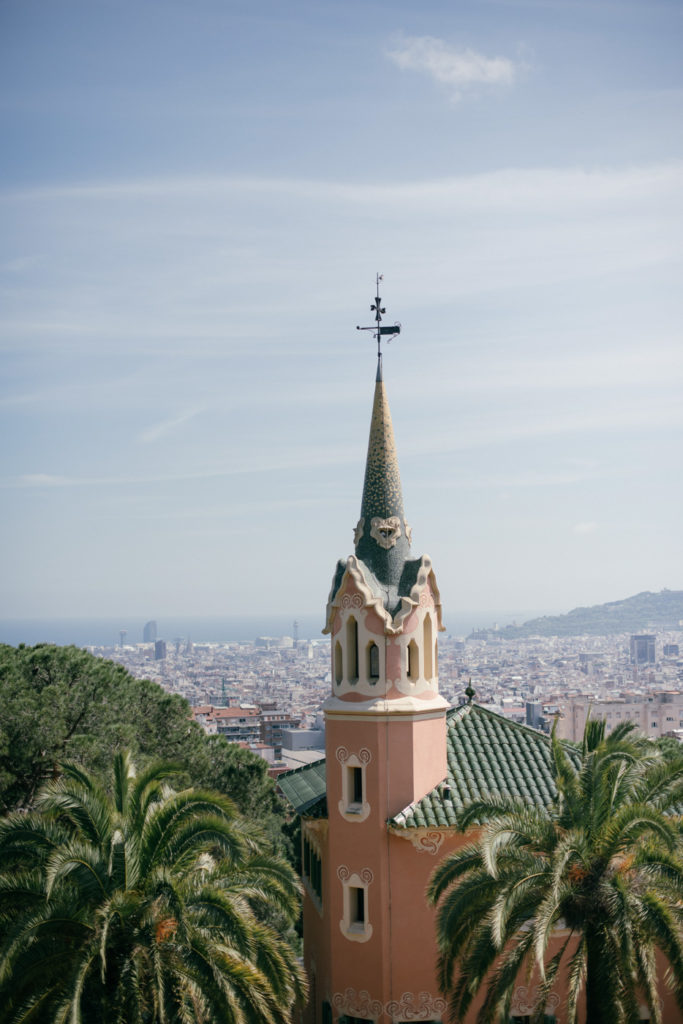
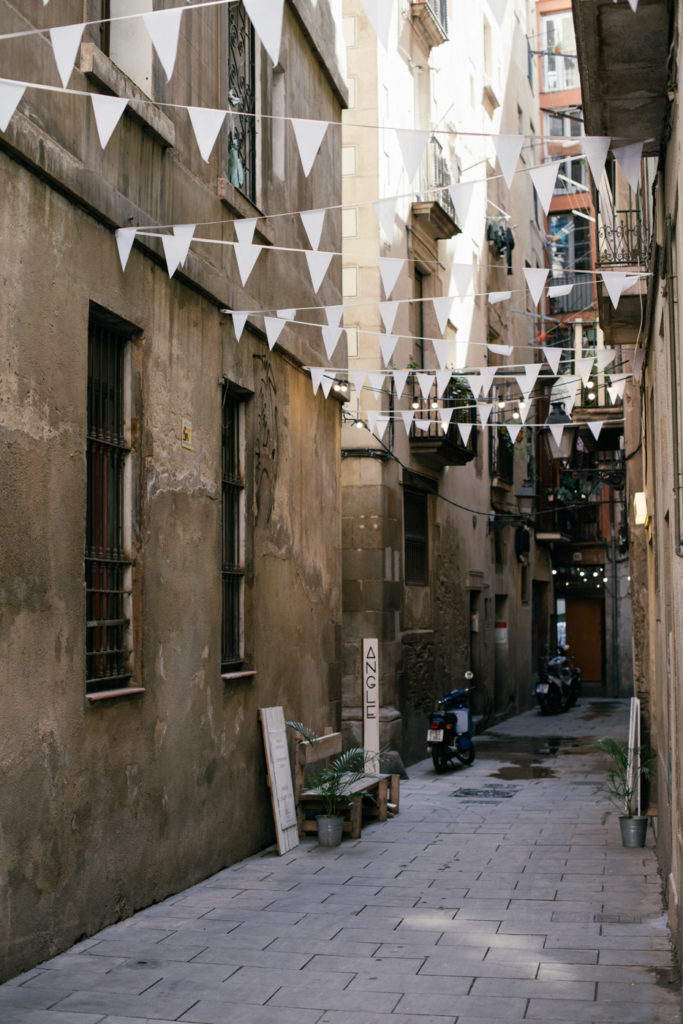

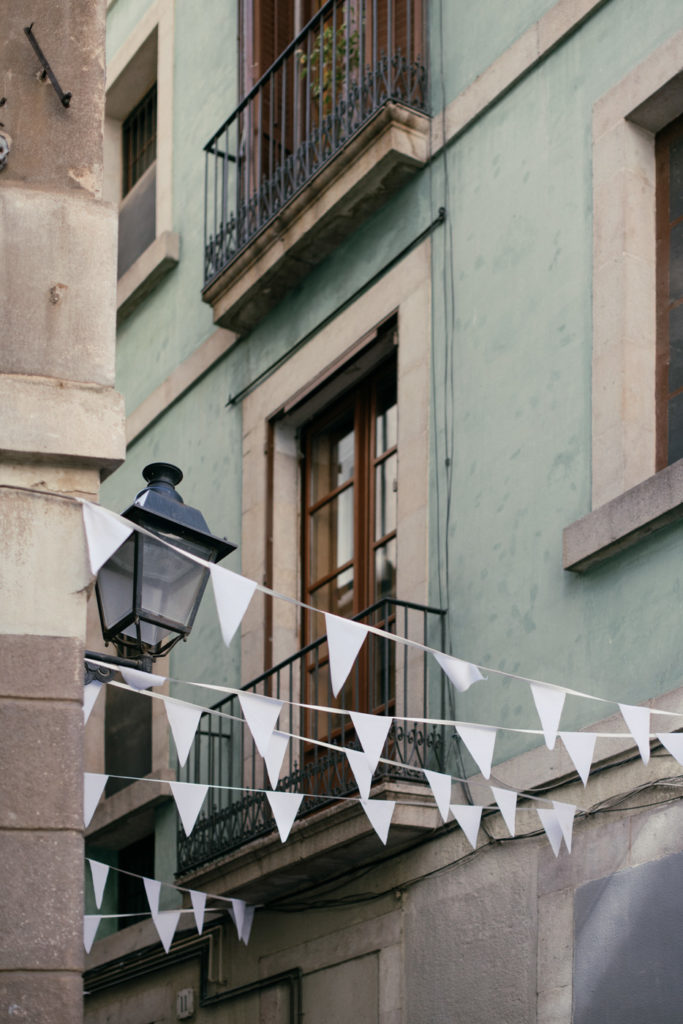
Although it is one of the world’s most influential places, the Catalan capital has somehow retained the same unhurried, breezy atmosphere that has cast its spell upon visitors for generations. For all of its power and cultural aptitude, it drifts dreamily along, driven but never rushed. Gaudi’s Sagrada Família, the iconic temple, has become a sort of national inside joke. Construction began in March of 1882, yet it remains unfinished, interrupted by the Spanish Civil War and dwindling funds. The scaffolding that wraps around it has become a staple of the building, and locals regard the building with exasperated humor. “It’ll be finished eventually!” one bartender laughs, as we look across at it in all of its semi-assembled glory.
Barcelona’s bars and restaurants exemplify this infectious spirit. Locals are as passionate about the booming fine dining scene as they are the cramped neighborhood taverns churning out the same family recipes for decades. Eating, wherever it may take place, remains a joyous, social act. Visitors quickly get used to the city’s rituals: coffee bars where locals knock back espressos while sharing a daily nugget of gossip with the barista; lunchtime countertops brimming with tortillas, golden calamari, and piping hot croquettas; cramped wine bars; and unstable tables scattered across pavements. At local markets, you can drink tiny glasses of wine and sample fresh bread or sizzling paella, while fat drips from jamon on hooks and orange nets of fresh mussels and oysters lie beneath flickering neon light. Early evenings are marked by cold beers and snacks of pickles, olives and pimiento peppers. Dinners run late into the night, with the lines between eating and drinking deliciously blurred. Whether in a shiny new biodynamic wine bar, an Australian brunch spot, or a strip-lit corner café serving battered cod, bean stew and cheap white wine, the spirit of Barcelona is never more alive, or more clear, than when food is at hand.

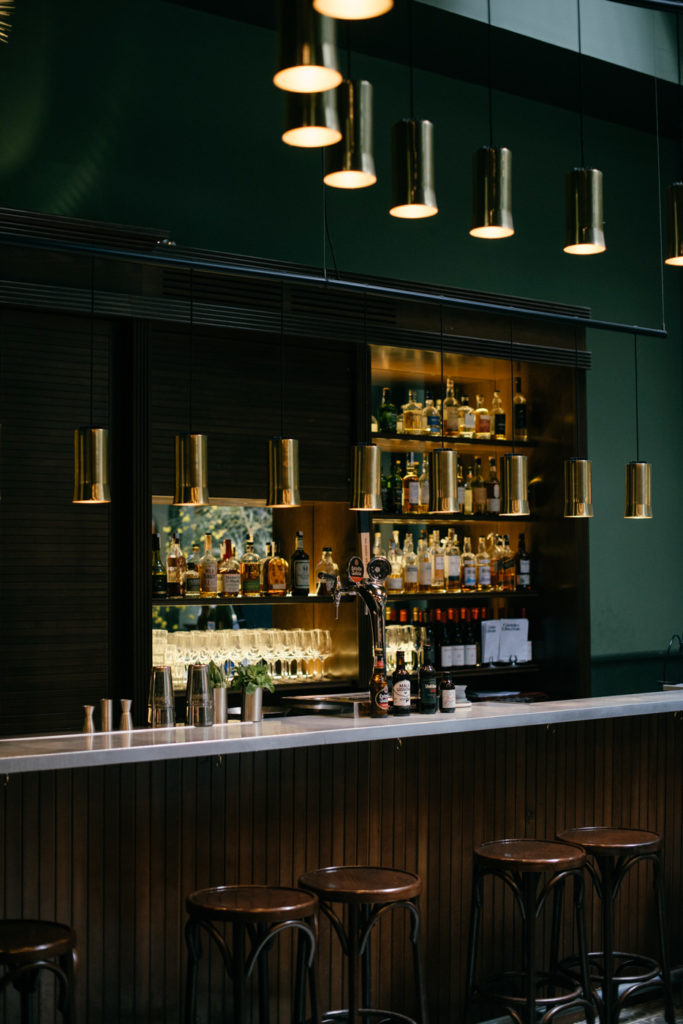
Casa Bonay
Gran Via de les Corts Catalanes
Since opening a year ago, Casa Bonay has come to represent Barcelona’s new generation. This boutique hotel has occupied a historic townhouse since 1869. Many of these opulent, classic mansions have been torn apart and remodelled to make way for glittering new building or designer showrooms, but the founders of Casa Bonay held onto the flesh and bones. Lovingly restored, the hotel showcases native designers with an interior of handmade textiles, Santa & Cole lighting, original scrubbed floor tiles, winding staircases, towering plants, and plenty of nooks to hideaway in. Guest rooms are finished in pastel tones with giant, cloud-like beds and balconies, and up on the roof, guests can lounge on hammocks and cool themselves beneath outdoor showers in the sweet-smelling orchard, where a phone is at hand for ordering drinks and food all day long.
Casa Bonay is also a hub of local arts and culture, and home to an in-house independent bookshop, a juice bar, a coffee roastery and a low-lit, forest-green bar/living room where tailor-made natural wines and vermouths flow and international DJs provide the soundtrack.
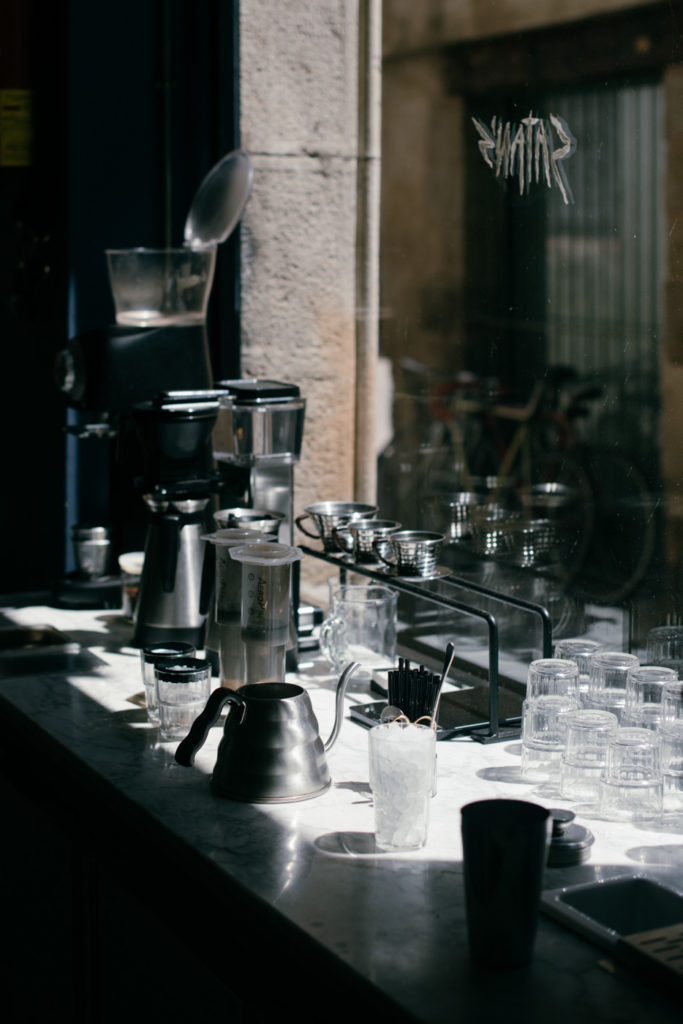
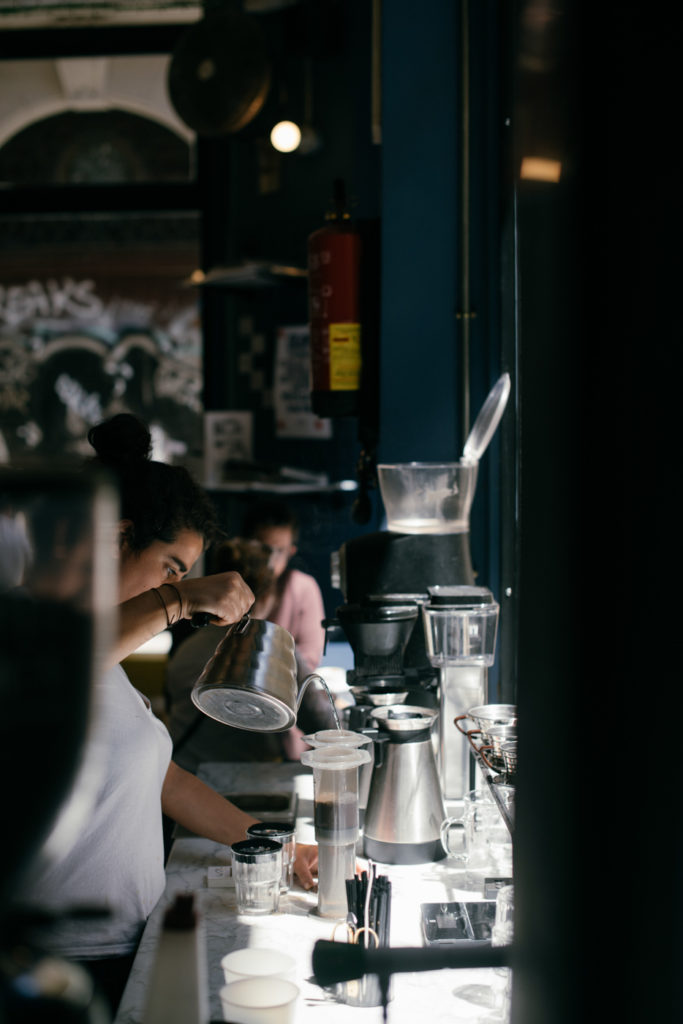
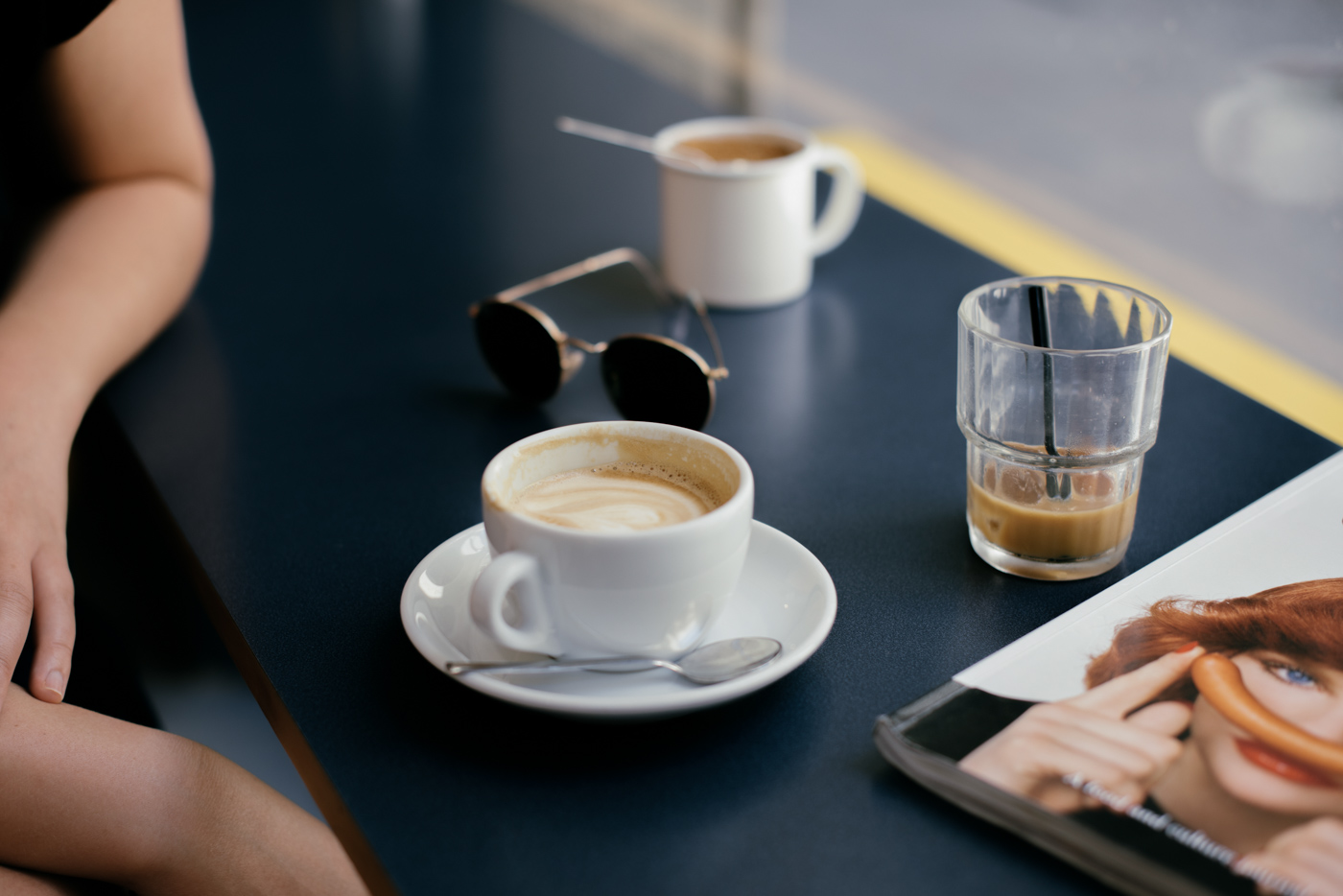
Satan’s Coffee Corner
Carrer de l’Arc de Sant Ramon del Call, 11
Ask a local where to find the best coffee in the city, and they’ll most likely point you in the direction of this bustling third-wave corner café. Set up by Marcos Bartolomé, who hails from a long line of coffee-makers, Satan’s pulled the trigger for a new generation of coffee shops in a city of classic coffee bars and bitter espressos. By scrupulous machine-cleaning, “designing” their water through a re-mineralization process, using fresh milk (strangely unusual in this city), and direct relationships with coffee farmers, Satan’s has confidently nailed down the formula for the some of the finest coffee in the city. Which explains why you’ll find both of their locations teeming with visitors all day. Pop to their new branch on Gran Via (attached, happily, to Casa Bonay) or spend a few caffeinated hours at their iconic corner café in the heart of Barri Gòtic, where you’ll find high ceilings, window seats, loud music, stacks of indie magazines, cool blues, candy pinks, and a surprising food menu of comforting lunches (read: massive, meat-filled sandwiches), as well as seasonal brunch dishes.
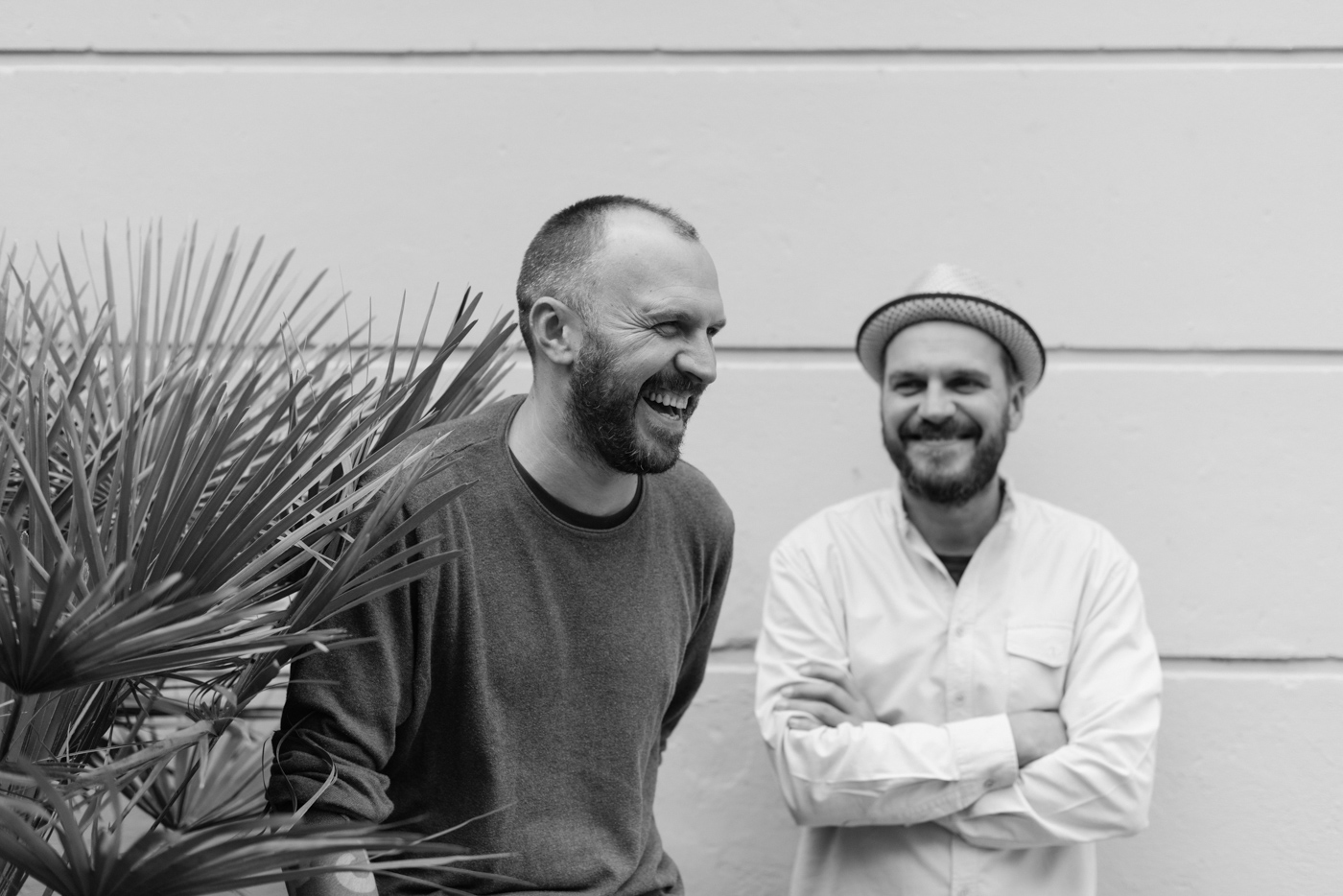
Xemei
Paseo de la Exposición, 85
The floor-to-ceiling oil painting of an extravagant seafood banquet hanging on the back wall seems to perfectly sum up this spectacular restaurant. It is a vivacious, welcoming place to sink in and emerge well-fed, merry and a little more at home in the city.
Twins Stefano and Max Colombo are the creative force behind Xemei, which has quickly built up a reputation as the one of the city’s best restaurants. Originally from Venice, they have become synonymous with Barcelona’s natural wine boom. Xemei lies unassuming on a leafy street in Poble-sec, inhabiting two wings with a smattering of street side tables at the front. The décor sits somewhere between Italian trattoria and an eccentric uncle’s living room, with emerald walls, red leather booths, lanterns, papier mache busts, white table cloths, and the remnants of past nights left in marker pen scrawls on the walls. The small menu offers a few market dishes, with a focus on traditional Venetian fare, like fresh pasta with anchovies, grilled octopus with eggplant or veal liver with polenta. The staff know natural wine like the back of their tattooed hands, and will do their very best to lavish you with some of the best (and most bizarre) natural wines you’re ever likely to try. Locals adore this place, as do the likes of Patti Smith and Ronnie Wood. Just don’t expect to see Woody Allen in here anytime soon—he was once turned away after showing up late for his reservation. He really missed out.
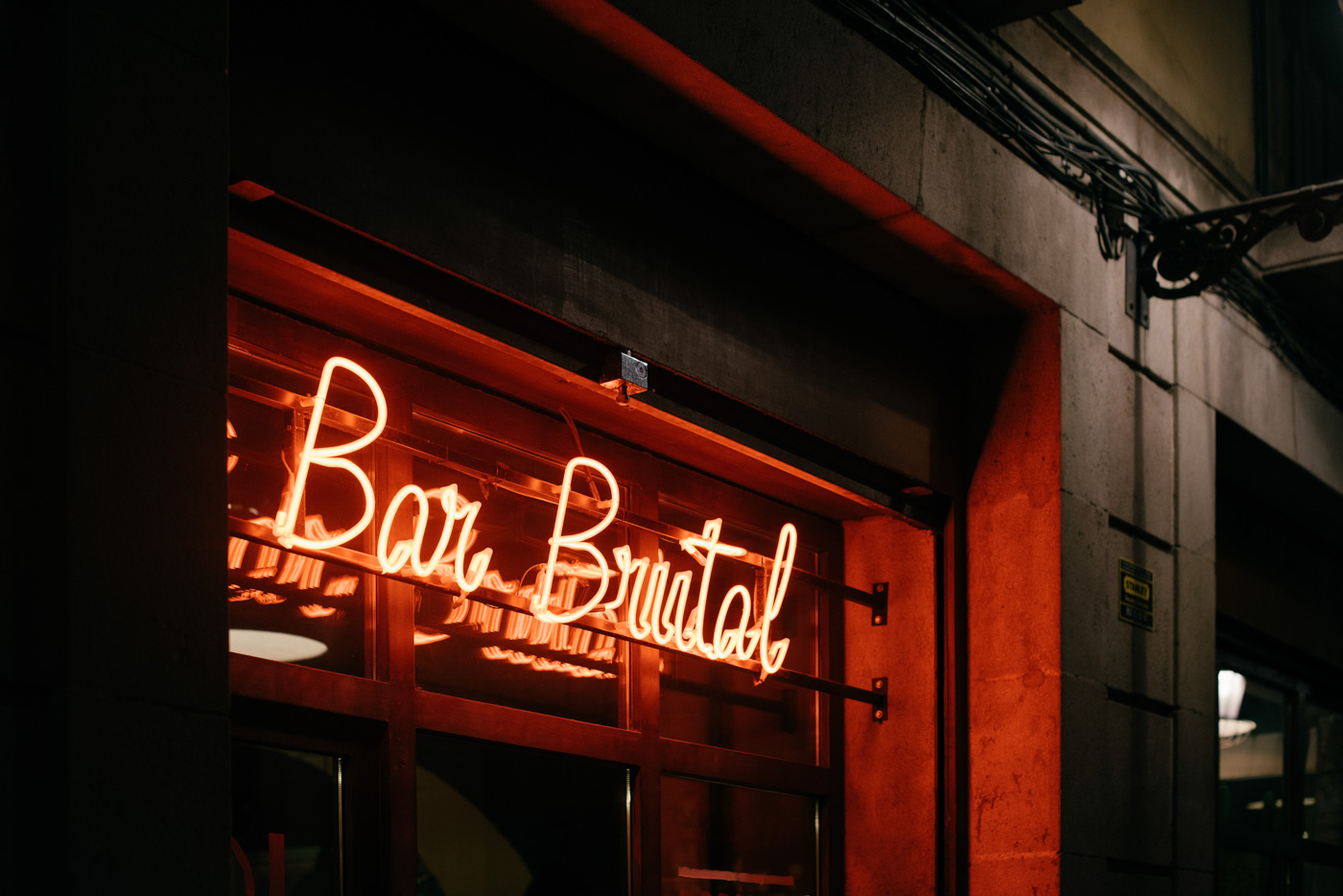
Can Cisa / Bar Brutal
Carrer de la Princesa, 14
The younger, mischievous sibling of Xemei, Bar Brutal is filled to the rafters every night of the week. The restaurant is divided into several bustling sections across chipped stone floors, festooned with antique furniture, giant shark sculptures, cow figures, neon signs, a pig with a halo, and natural wine-fuelled scribbles on the royal blue walls. A raucous, hedonistic energy courses through the place, helped along by another eclectic wine list, an oyster bar, hyperactive music, and a menu of seasonal sharing plates like sweet, briny pork terrine with thick pickles; guinea fowl with horseradish and asparagus; red tuna with leeks and confit lemon, flour-dusted bun brimming with pulled porchetta and anchovy cream; and their signature lamb brain with romanesco and anchovy broth.
It is located on one of the more touristy drags of El Born, but the din of Catalan chatter still provides the soundtrack. And if you fancy packing a few natural wines to take home, you can pay a visit to their in-house cellar/bar Can Cisa, where you’ll have over 300 bottles to peruse.

Doga
Carrer Salvador Seguí, 5
If you haven’t quite hit your organic wine limit, head to this hip little bar in the blossoming district of Sant Antoni. The small room is washed in cool blues and natural wood, with just a few chairs lining the walls and a couple of benches outside, where you can watch the world drift by. Its meticulously-selected list of natural wines delight with their unpredictability; whites can taste like cider, reds can taste like rose, oranges can taste of whiskey. A concise, surprising tapas menu is scribbled on the back of a receipt, offering burrata with orange, dried tomatoes and salmon, bean salad with rucola, and Iberico pork with truffled potatoes and padron peppers glistening with salt crystals. We were supposed to stay for just a couple of drinks, but somehow one dish turned into several, and one bottle turned into two. Such is the way in Barcelona.
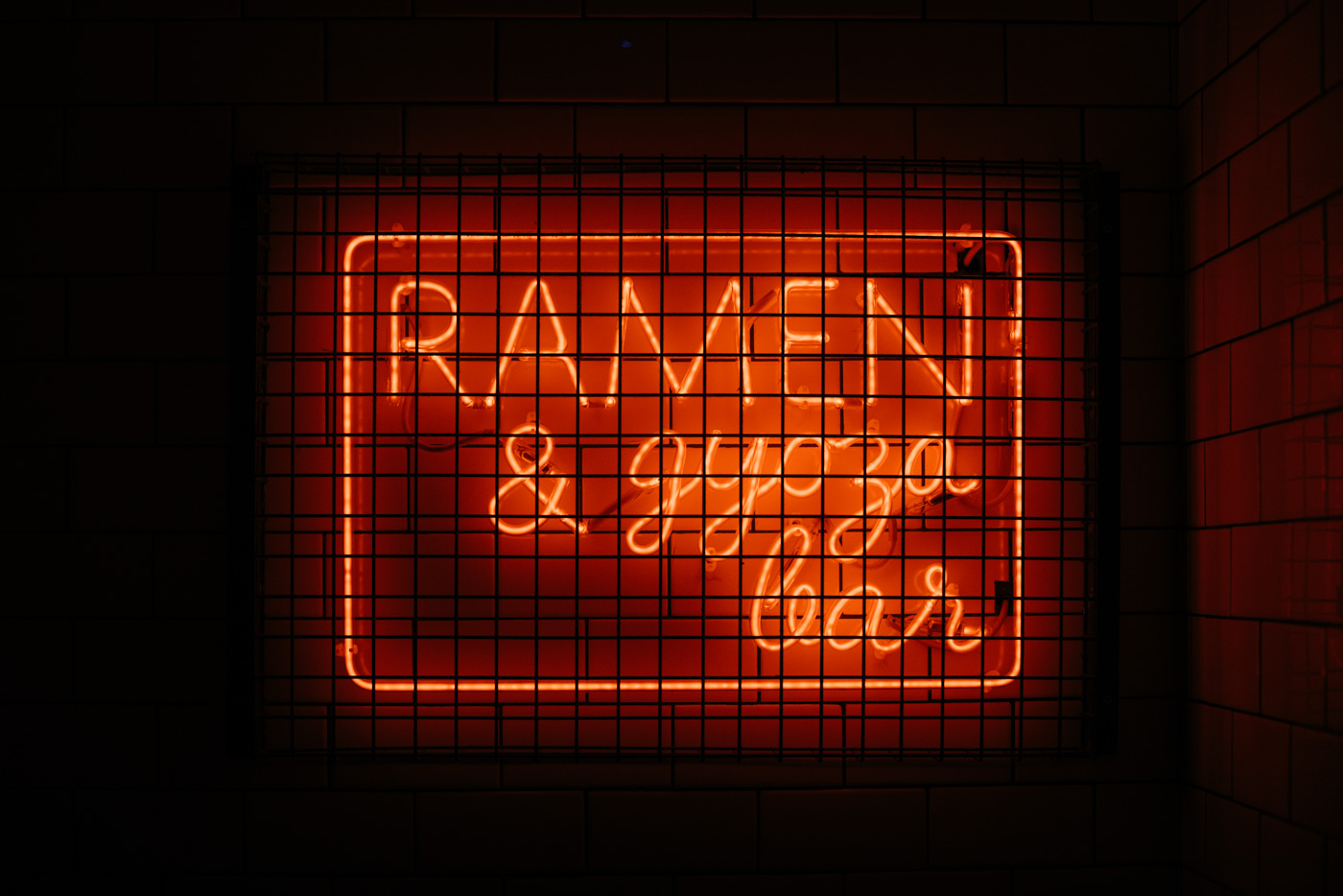
Koku
Carrer del Comerç, 29
When the craving for Japanese comfort food strikes, locals head to this cozy den in the folds of the Gothic Quarter. Guests sit shoulder to shoulder at communal tables, knocking back cold beers and slurping high-grade handmade ramen. At Koku Kitchen Buns, fluffy bamboo-steamed buns are loaded with Pagés chicken, pulled veal, pork or mushrooms, prepared in an open kitchen not far from Born Market. Down in the basement, you’ll find groups sharing deep bowls of ramen and freshly made gyoza in an orange-lit room of long hairpin tables and subway tiles.
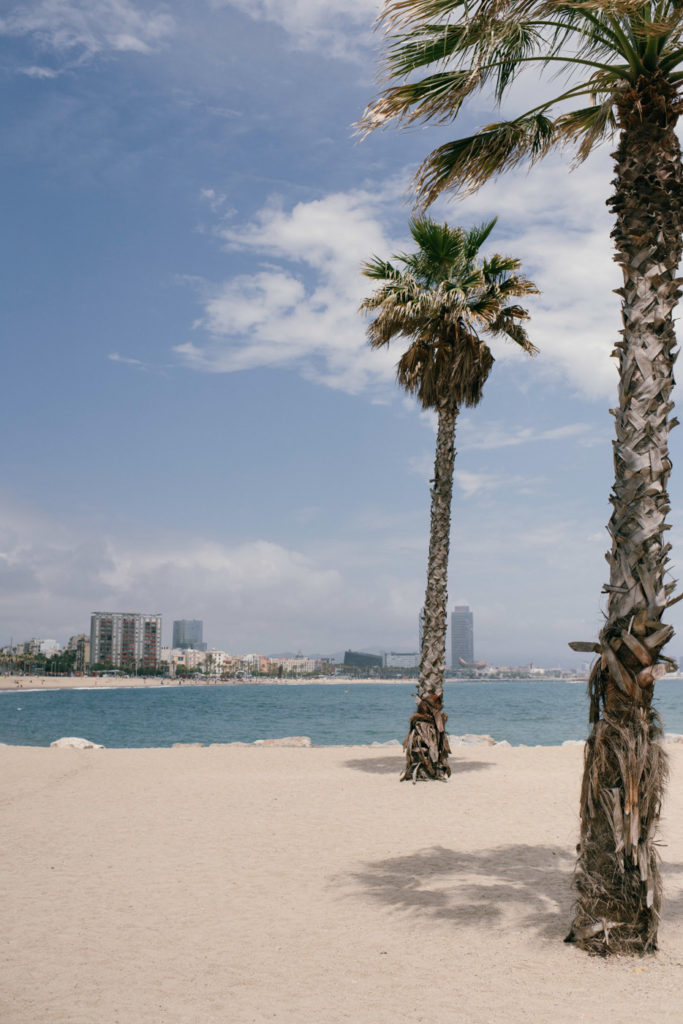
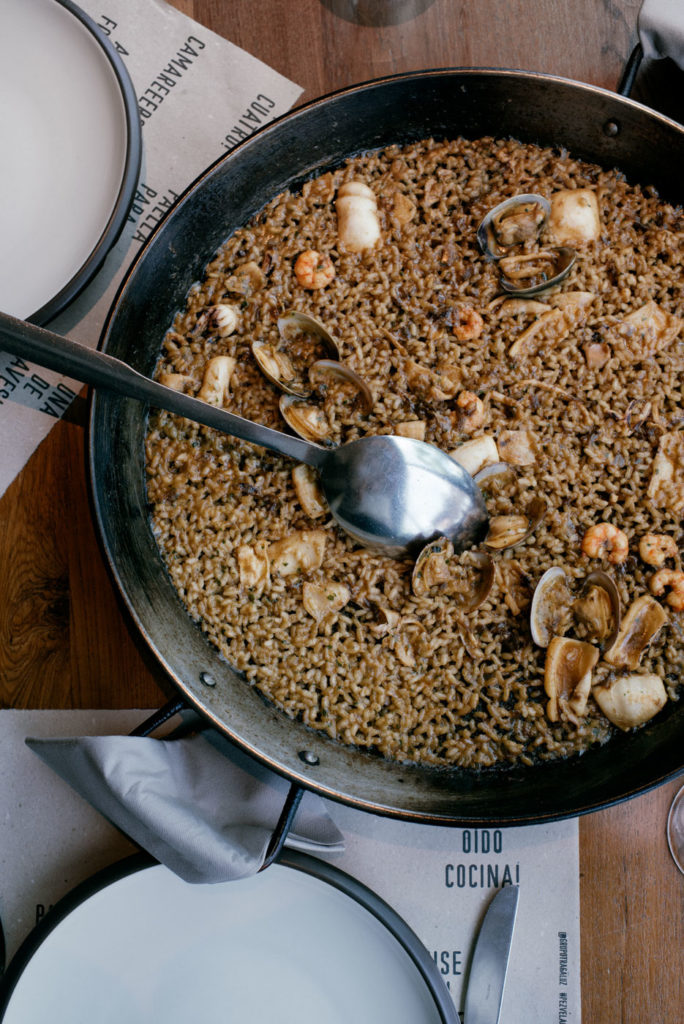
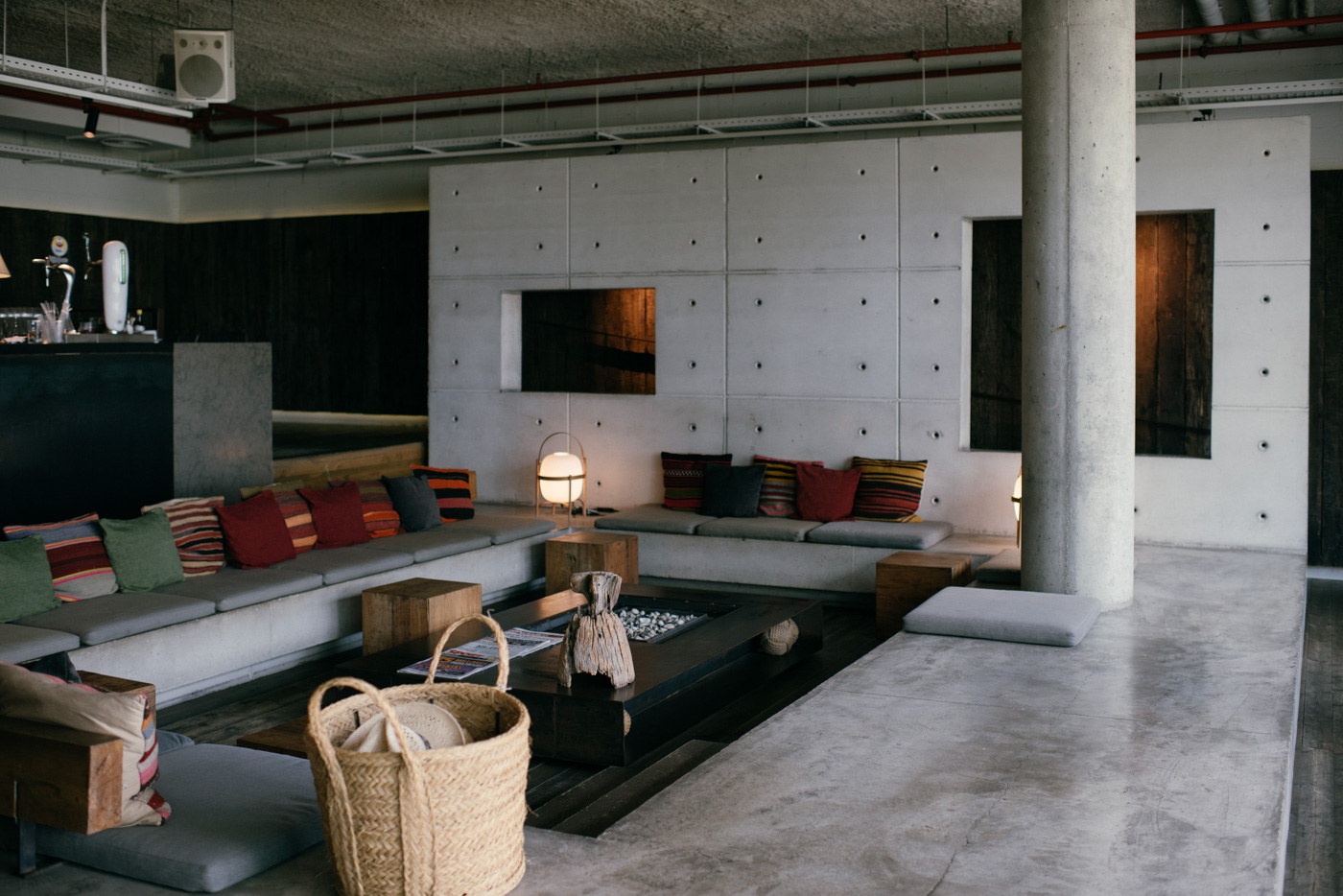
Pez Vela
Passeig del Mare Nostrum
Family gatherings in Spain almost always call for a colossal pan of paella—the hearty, communal Valencian rice dish that is, to most people, the quintessential cuisine of Spain. You’ll find it served in classic arrocerias across Barcelona, but beachside hotspot Pez Vela serves up what are almost certainly the best ones in the city. The elegant space is made up of exposed pipework, concrete floors, and a sunken lounge area, while giant pans of rice and seafood bubble away in a chaotic open kitchen. The outdoor terrace is shaded by wicker and palm trees, while groups sit at tables overlooking the ocean with Barcelona’s skyline tracing its edge. Bottles of wine lie in melting ice buckets, while dark, shallow pans of paella are piled onto plates using a wooden spoon. They come in a handful of guises: shrimp and clams, artichoke and black squid, sausage with mushroom and asparagus, or brothy lobster. All have a nutty bite, razor-sharp dashes of citrus, and the all important socarrat—the toasty, caramelized crust at the bottom of the pan that is the litmus test of an authentic paella. Best enjoyed scraped off and drizzled with a squeeze of lemon.
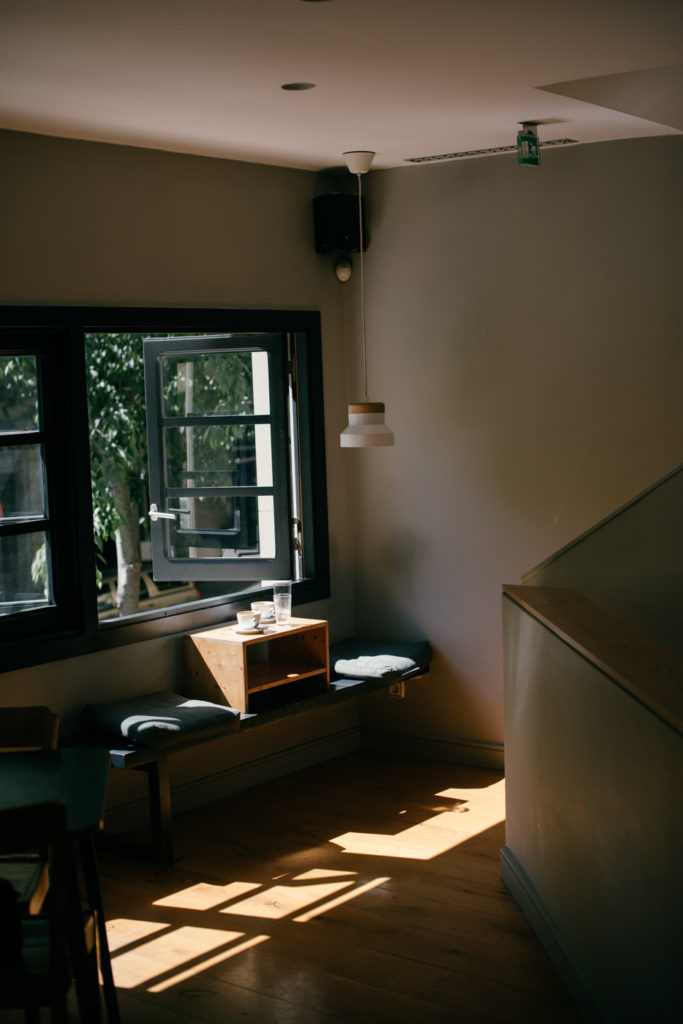
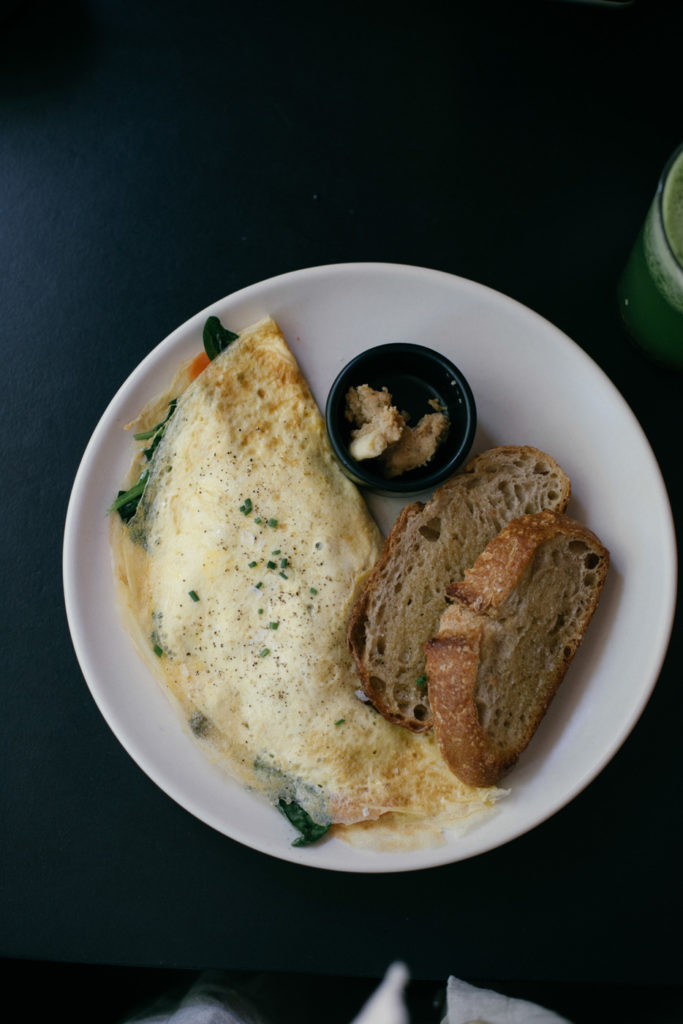
Federal
Carrer del Parlament
Since brunch became big business in Barcelona a few years back, Federal has been at the center of the movement. Named after a sleepy town in New South Wales, Australia, this three-level café is flooded with natural brightness, with everything from the glass vases of fresh flowers to the curiosity cabinets and wide wooden sharing tables bathed in sunlight all day long. At the streetside window seats or from the sun-drenched rooftop, you can fill up on fresh juices, ricotta bruschetta, toasted croissants, brunch burgers, poached eggs with sage potatoes, fluffy omelettes, and ice-cold bloody marys—which are far stronger than they taste.
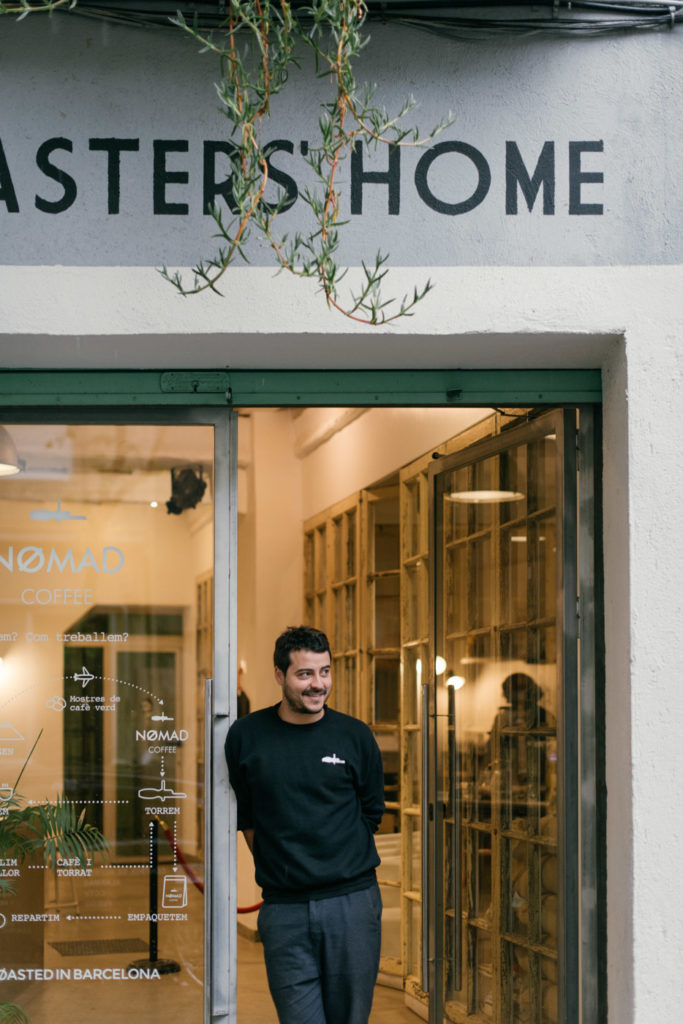
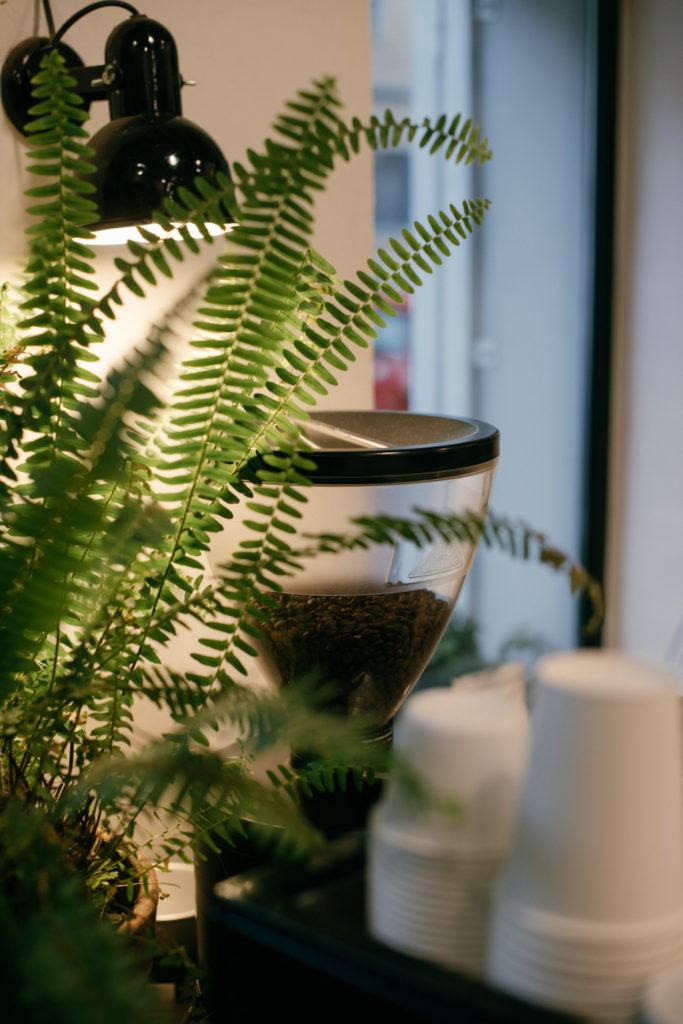
Nomad Coffee
Passatge Sert, 12
Jordi Mestre, the London-trained two-time Spanish barista champion, returned to his native Barcelona in 2013 to open up Nomad Coffee, the first speciality coffee shop and roastery in the city. Sourcing from fair trade farmers across the globe, Nomad uses meticulous techniques to create fine, complex coffee. Their Coffee Lab & Shop is a love note to speciality brewing, with guests gathering at the wooden bar to be served V60, aeropress, cold drip, espresso, and cold brew from a collection of glinting contraptions, served on slabs of marble.
“I had to show how coffee could be served,” Mestre tells us when we visit him at the Nomad Roster’s Home one stormy afternoon. “The coffee culture has been the same in Barcelona for so long, it’s very rigid. So it was difficult to change people’s minds. Expats have played a huge part in our success, and now the support of the local community is growing. It’s amazing what’s happening in this city right now, with small producers making bread, wine, beer, coffee. The city is changing in so many ways.”
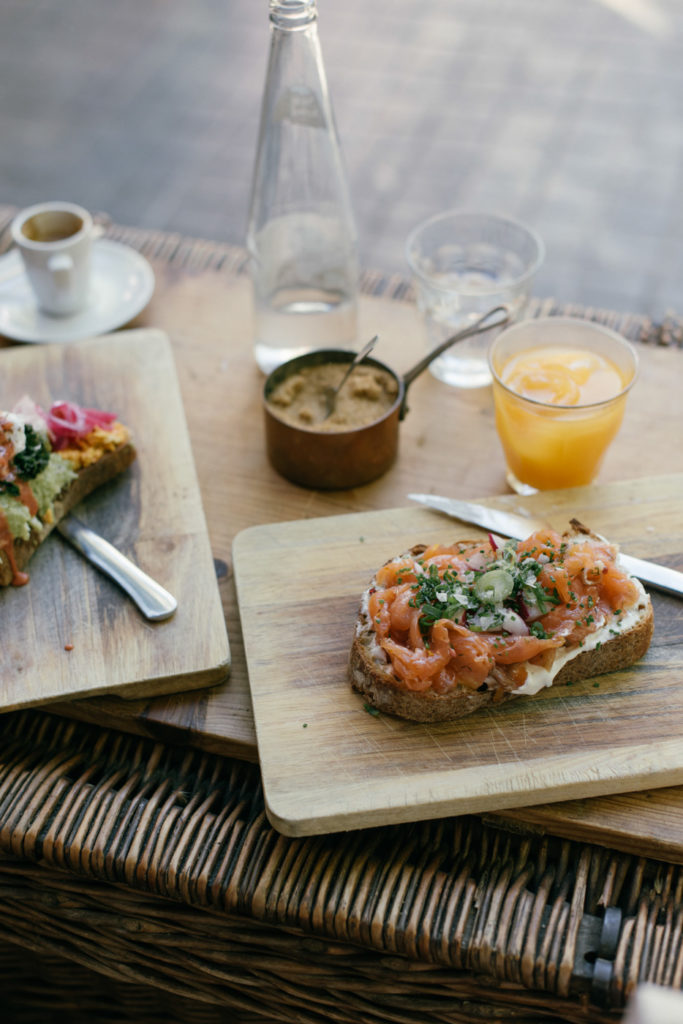
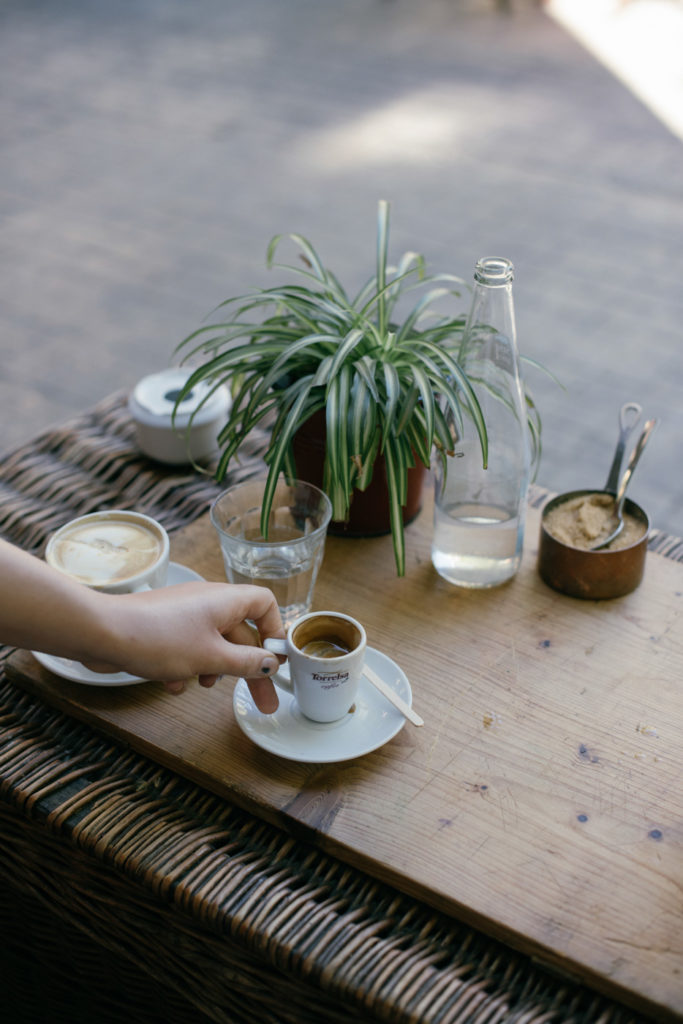
Picnic
Carrer del Comerç, 1
Nesting down one morning at one of Picnic’s tables on the tree-shaded corner of Carrer del Comerç, we sipped jet-black espresso and felt our vermouth hangovers slip away. This friendly neighborhood spot has been restoring stylish locals since 2010, serving up some of the city’s best seasonal brunch food and a menu inspired by the Deep South. Inside, sky blue tables line a clattering kitchen, while outside young families and groups of friends share fried green tomatoes, burrata, turkey sandwiches and duck hash at antique picnic baskets beneath the shady blue awning.
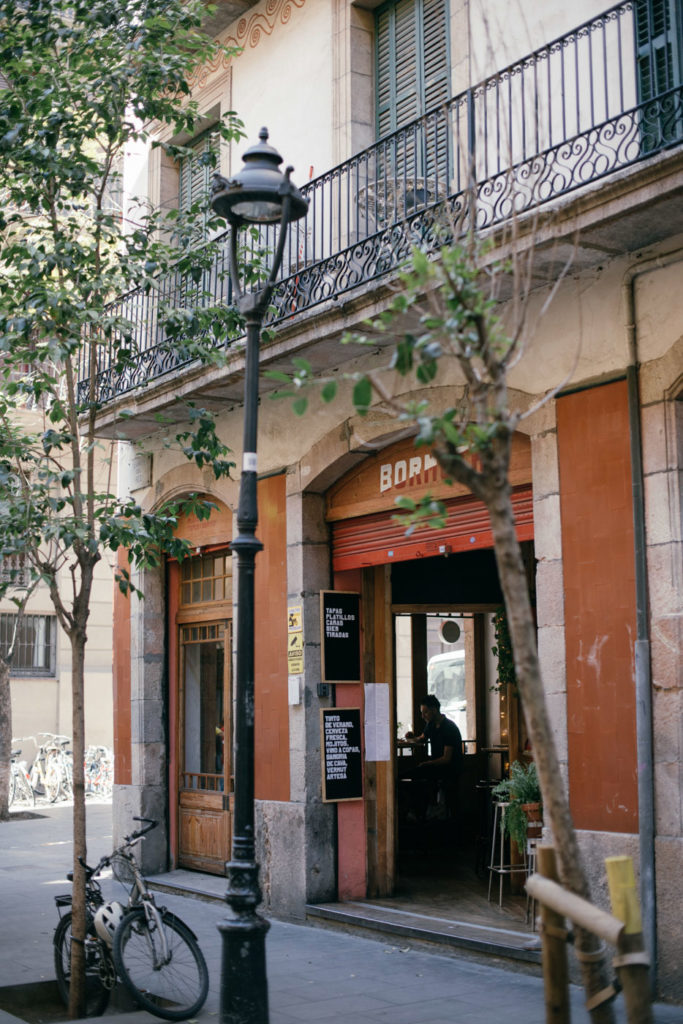
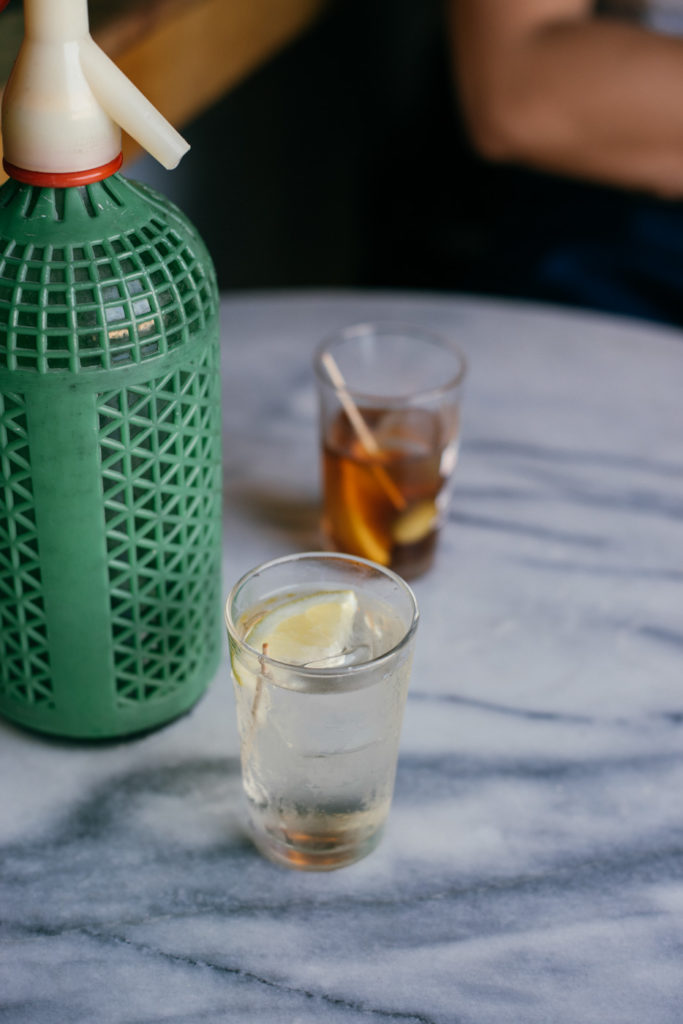
Bormuth
Plaça Comercial, 1
As the afternoon slips into evening, locals swarm to Barcelona’s countless bars, cafés and restaurants for cocktails, icy wine, and pre-dinner tapas. Wander blindly into any one of these bustling establishments and you’ll be met with platters of squid, garlicky pan con tomate, golden croquetas, patatas bravas, and oil-slicked olives. Inevitably, some are far better than others. For a fail safe evening appetite-whetter, join the crowds at Bormuth on the brink of Plaça Comercial, in the center of el Born. Bar stools and makeshift tables crowd the open window at the front, while the bar extends out onto a small terrace at the back. We visited most afternoons, edging our way past the throngs of visitors onto a window seat at the back to order dark, medicinal vermouth, cooling lentil salad, jamon with manchego, and fried eggs over potatoes while the racket of radio and heated conversation filled the air.

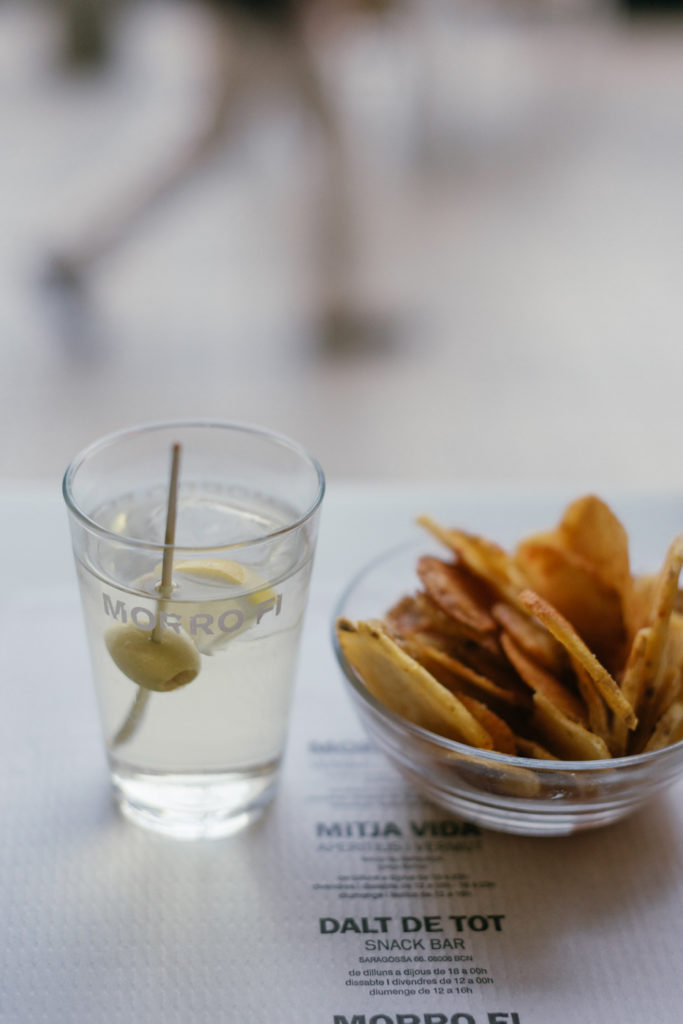
Taranna
Carrer de Viladomat, 23
Time can slip away from you easily in this little corner café, which is located in one of the city’s most peaceful enclaves. It’s hard to pass by the tall forest-green wooden shutters, which are opened onto the cobbled street. No matter how long we seemed to spend getting lost in Barcelona, we always seemed to end up at the foot of this street, with Taranna beaming at us in the distance. The walls are finished with white subway tiles, while the small bar and coffee station is propped at the back of the room, separated from the kitchen by an open hatch. Guests graze on homemade cakes, steaming tea, sandwiches piled with local meats and cheese, fish dishes, and seasonal tapas until aperitivo time, when a good selection of cervezas, wine and frosty spritzes are cracked open.

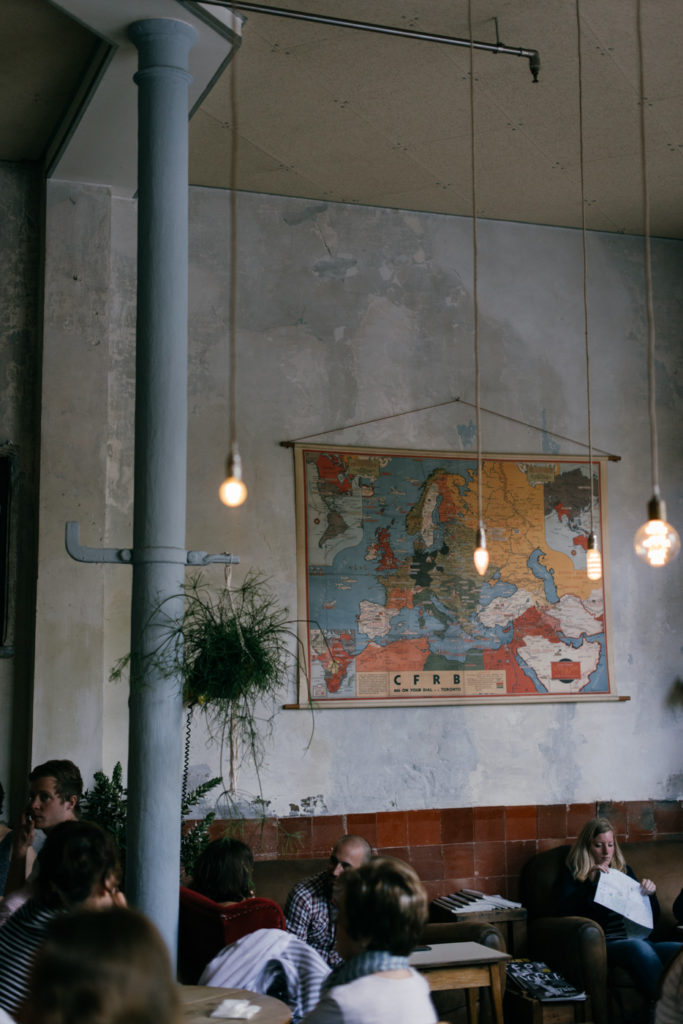
Granja Petitbo
Passeig de Sant Joan, 82
Light, seasonal breakfasts, brunches and lunches are served in this cockle-warming café, which occupies a soaring former city dairy. Everything is intentionally disheveled—scrubby walls, chipped tiles, wonky furniture, rusted mirrors, and exposed pipework, offset by vases of lush flowers, sunlight and a fresh-faced clientele.
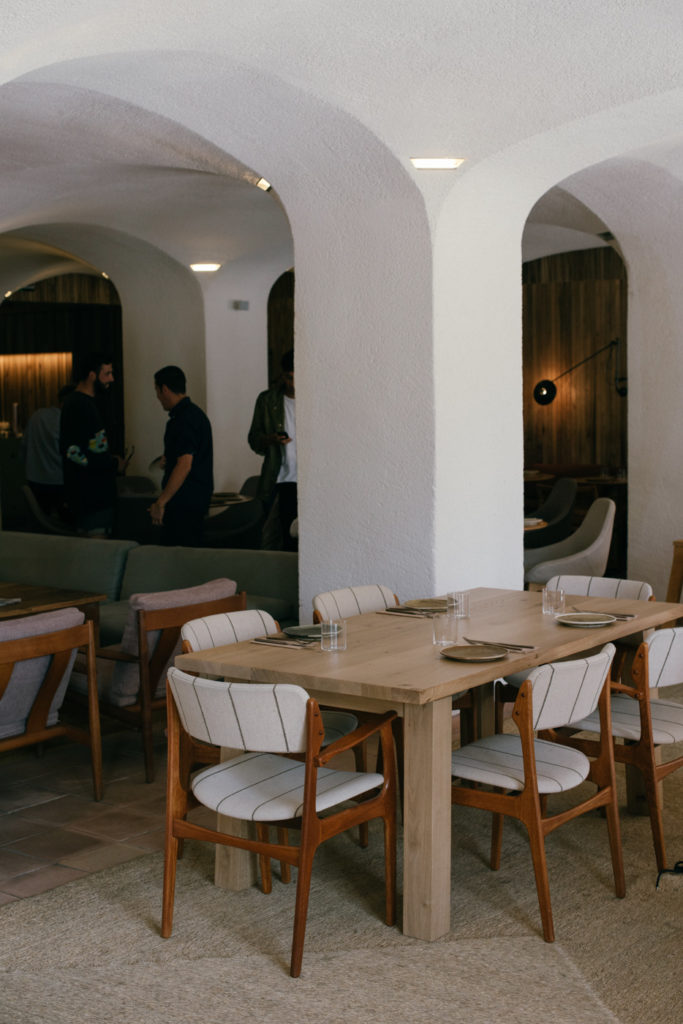
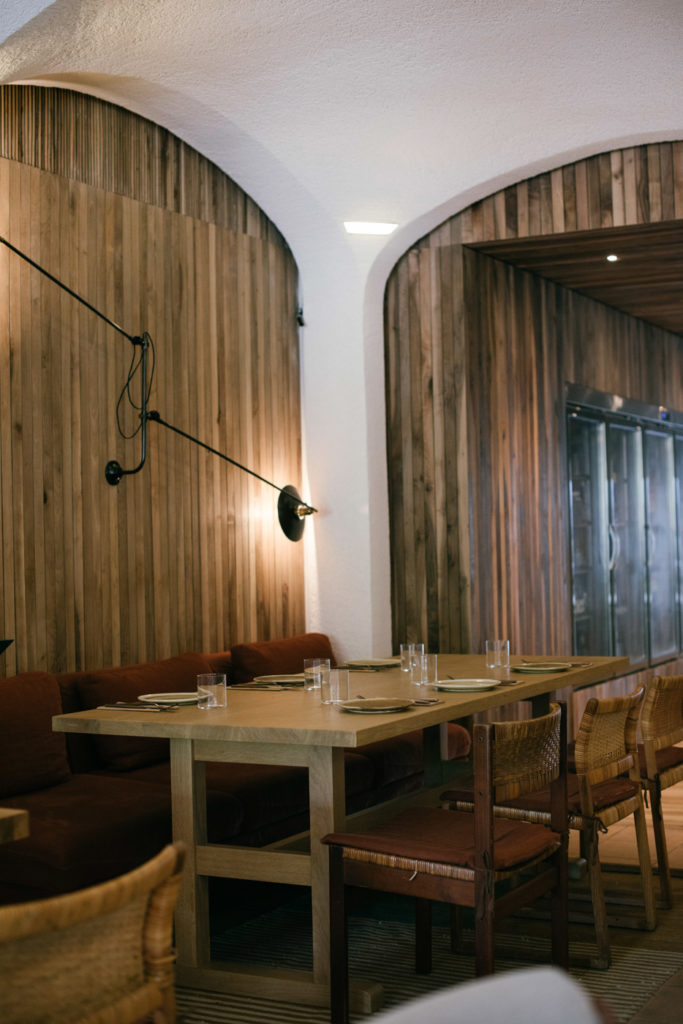
The Green Spot
Carrer de la Reina Cristina, 12
We discovered this vegetarian mecca tucked away in the busy seaside neighbourhood of Barceloneta. The beachy atmosphere of this area spills into the restaurant, which was designed by Brazilian architect Isay Weinfeld. Rich, heavy timber contrasts with vaulted whitewashed stone walls and thick coverings of greenery. A long oak-lined hallway leads to a dining room of flagstone floors and russet-coloured couches. The lovingly-devised menu brims with vibrant, satisfying vegetarian and vegan dishes, with everything from fried cauliflower with tamarind and mint sauce, firewood eggplant with tahini and sweet potato tagliatelle, to kimchi quesadillas and carbon-black pizza with caramelized onion, pistachios and velvety goat’s cheese.We ordered as many as we could, along with a couple of cold-pressed juices for good measure, and left feeling recharged, which, in a batter-happy city where you could easily go a week without seeing a vegetable, is a good feeling.
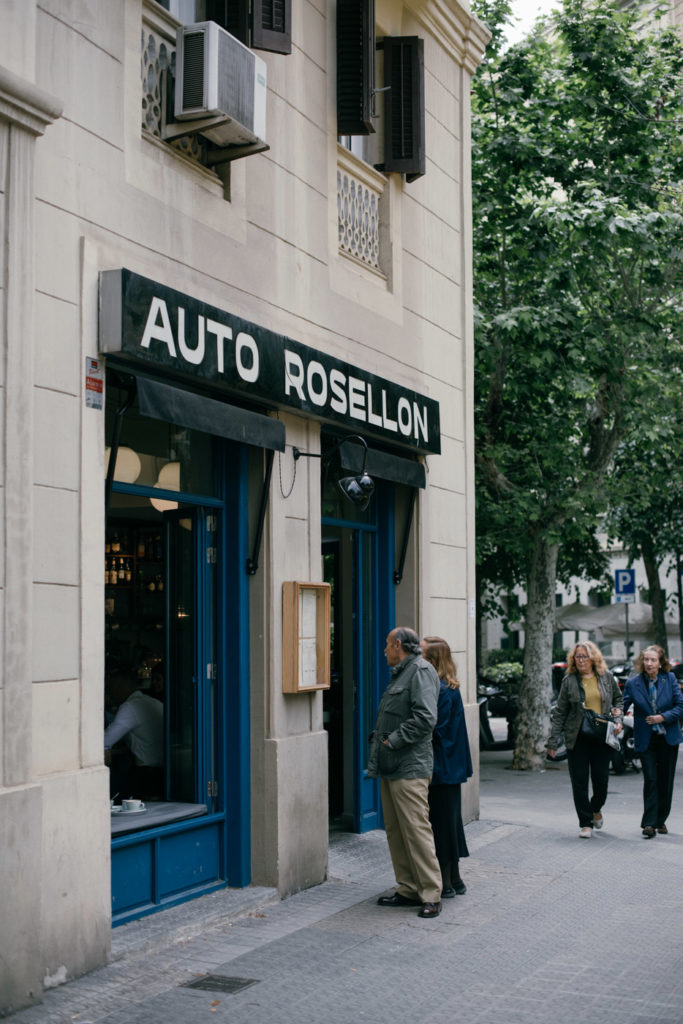

Auto Rosellon
Carrer del Rosselló, 182
I will always think of this new-age neighborhood spot with fondness, as it saved us from severe mid-morning hunger after a night of vermouth and a missed breakfast. We’d enjoyed dinner here a couple of evenings before, perched at the open window seat of this former car parts warehouse with a bottle of natural wine. We had shared small plates of their lovingly prepared food, which takes inspiration from all corners of the globe: crispy salmon with wasabi and avocado, silky gnocchi with sweet potato ricotta, pumpkin with dehydrated yogurt, and pork pibil tacos. The tables are scattered across a concrete floor, with a coffee bar on one side and an open kitchen framed with hanging chillies and copper pans on the other.
We found ourselves back in the neighborhood, and by day, it takes on an entirely new persona. Natural light floods the room, which is cooled by wooden ceiling fans and wide-open doors. We slid back into our spot at the window, ordering two espressos and the first thing on the menu: toast rubbed with fresh garlic, olive oil, crushed tomatoes, and thick-cut jamon. The waitress didn’t bat an eyelid when we inhaled the sandwiches in under a minute, asking simply if we’d like another.





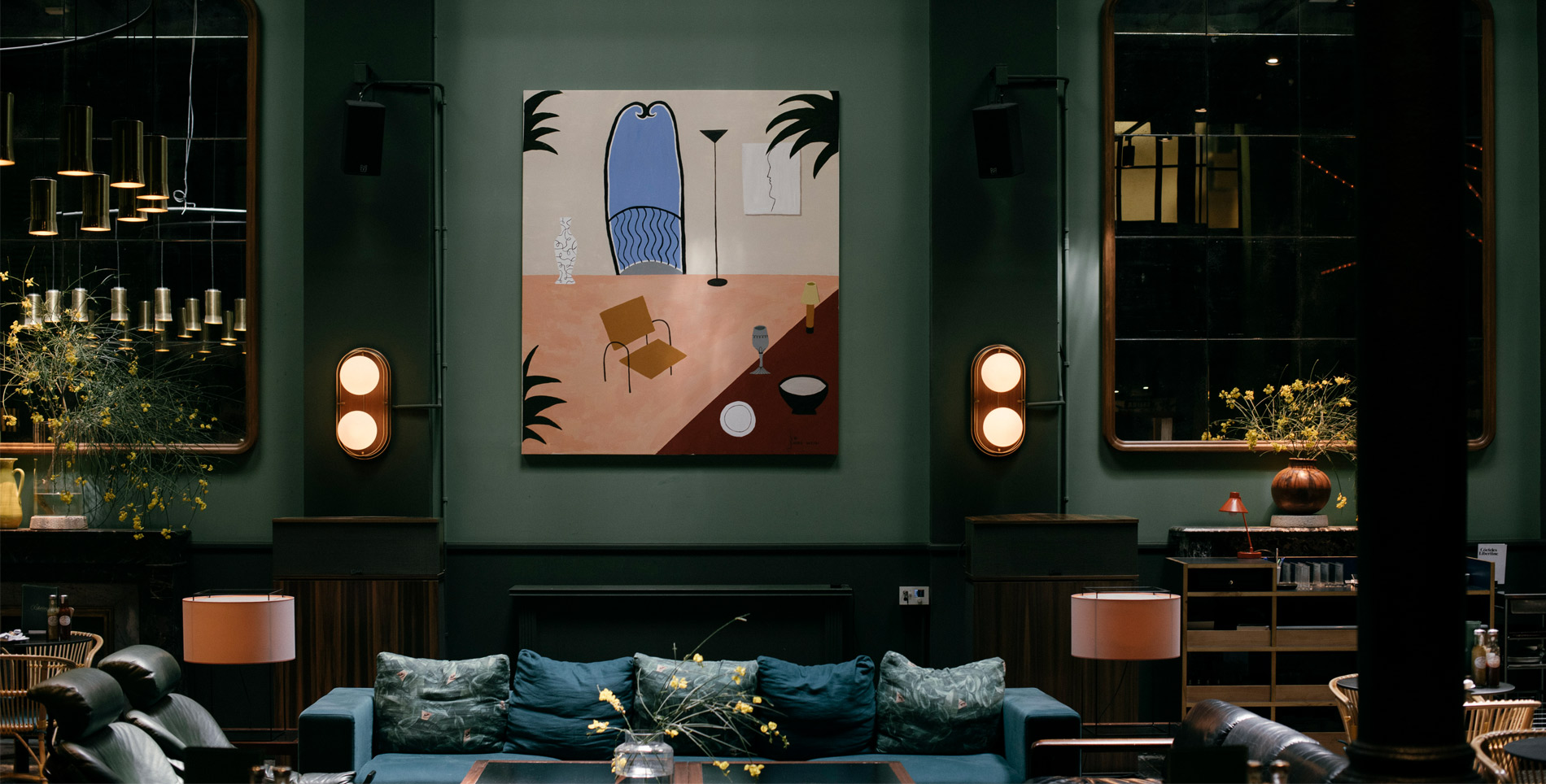

Our comments section is for members only.
Join today to gain exclusive access.